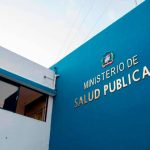CAASD addresses water production decline

Santo Domingo.- The Santo Domingo Aqueduct and Sewer Corporation (CAASD) has reported a significant decline in the production of drinking water, currently standing at approximately 379 million gallons per day. This reduction is attributed to decreased rainfall affecting river basins across the country due to a prolonged drought.
According to CAASD, since mid-February, water production has dropped from 475 million gallons per day to the current level of 379 million gallons per day. This decrease of 96 million gallons per day has led to service disruptions in various sectors of the National District, Santo Domingo Oeste, Santo Domingo Este, Pantoja, Los Girasoles, Los Alcarrizos, and Pedro Brand.
The reduction in production is particularly evident in aqueducts such as Duey, Isa Mana, Isabela, Haina, and the Salinity Barrier. In response to the situation, an emergency plan has been implemented, deploying 95 water tankers to augment water supply to affected areas. Additionally, CAASD’s brigades are working intensively to equip 50 wells in vulnerable areas to alleviate the impacts of the drought.
CAASD emphasized that the decreased flows in rivers supplying the main aqueducts, including Haina, Duey, Isa, Mana, Isabela, Nizao, and Ozama, have significantly affected water production. This contrasts with the period from August 2023 to February of this year, characterized by frequent rains that allowed the aqueducts to operate normally.
The corporation highlighted that the drought typically occurs from November to mid-April each year, but the current situation has exacerbated challenges in water production and distribution, impacting the population of Greater Santo Domingo.


















But of course, there is no mention of the millions of gallons of water lost because of the leaking pipes from the water sources to consumers that have not been periodically maintained, replaced, or ignored. It is easier to blame mother nature for water shortages.
The government should demand water saving plumbing fixtures for all new building constructions.